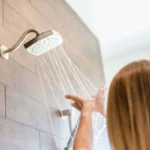Portable air conditioners are a great way to cool down your space without the hassle of installing a window unit. However, there might be times when your portable AC needs to be cooling as it should. It’s important to identify why your portable AC isn’t cooling and find the right solution before throwing money at the problem. Let’s look at five common reasons why portable AC not cooling properly and how you can fix them.
Portable AC not cool efficiently due to dirty filters, improper venting, or low refrigerant levels. Regular maintenance can help resolve cooling issues.
Why Portable AC Not Cooling | Reasons And Solutions
Dirty Air Filter
A dirty air filter can prevent your AC from cooling effectively. When dirt and dust accumulate on the filter, it restricts airflow and reduces the unit’s efficiency. To check if this is the issue, inspect the air filter for dirt buildup or clogs. If it’s dirty, replace or clean the filter as necessary.
Not Enough Ventilation
Poor ventilation can cause your portable AC to struggle with cooling efficiently, requiring plenty of fresh air to work properly. Ensure all vents are open and unobstructed by furniture or curtains so that fresh air can flow freely through the room.
Additionally, ensure that any exhaust hoses are securely connected to an exterior window or wall vent and that they’re free from any blockages, such as leaves or debris outside the vent opening.
Unit Is Overheating
Portable ACs have built-in safety features that will shut off the compressor if it starts to overheat due to inadequate ventilation or too high of an ambient temperature in the cooled room (usually above 90°F).
To fix this issue, ensure all vents are open and unobstructed by furniture or curtains so that fresh air can flow freely through the room and reduce room temperature below 90°F if possible.
Additionally, ensure that any exhaust hoses are securely connected to an exterior window or wall vent and that they’re free from any blockages, such as leaves or debris outside the vent opening.
Also Read: Must Have Camper Accessories | Best 6 Things
Low Refrigerant Levels
Low refrigerant levels in your system could also cause poor cooling performance in your portable AC unit due to a lack of airflow through its evaporator coil(s).
As such, you may need to refill its refrigerant levels with professional help from a trained HVAC technician with experience working with portable systems–refilling refrigerant yourself is dangerous. It requires special tools/training only available to professionals!
Wrong Temperature Setting
Lastly, improper temperature settings could be causing your portable AC not to cool correctly either because you have set it too low on its dial (which won’t cool faster) or because you have set it too high (which won’t cool at all).
The correct setting for most units is between 68°F-77°F depending on your comfort level–but remember not to go over 77°F; otherwise, you risk causing damage/overheating issues with some models!
Also Read: Can I Run My Camper Ac On 20 Amp?
How Long Does It Take For A Portable Air Conditioner To Cool?

When you first turn on a portable air conditioner, it may not feel cool immediately. Depending on the size of the room and how hot it is outside, it could take anywhere from 30 minutes to two hours before you start feeling relief from the heat.
During this time, the unit is working hard to lower the temperature in your home. It is also important to ensure that all windows and doors are closed tightly so that no warm air can escape or enter while your AC unit cools down your room.
In addition to making sure that there is no way for warm air to escape or enter your room, it is also important to understand what type of unit you have. Different units will have different cooling capacities and rates of efficiency.
If you choose a unit with too low of a BTU rating (the measurement used for cooling capacity), it will take even longer for your room to reach a comfortable temperature.
On the other hand, if you choose an AC unit with too high of a BTU rating, it may run inefficiently and cost more energy bills than necessary.
Finally, once your portable air conditioner has cooled down your room, make sure that you maintain optimal temperatures by adjusting the thermostat setting as needed.
By setting up a temperature schedule ahead of time, such as setting your thermostat higher when no one is at home during the day and lower at night when everyone is sleeping, you can maximize efficiency and save money!
Also Read: How To Replace Heat Pad On Lift Chair?
Bottom Line:
Now you know why portable AC not cooling? Portable air conditioners can provide efficient cooling when installed correctly. Still, there might be times when something goes wrong, resulting in poor cooling performance—whether due to clogged filters, inadequate ventilation, wrong temperature settings, etc.
By troubleshooting these issues one by one using our guide above, you should be able to get back up & running quickly without having costly repairs/replacements!
If all else fails, consider seeking professional help from an experienced HVAC technician to return to comfortable temperatures inside your home again soon!



